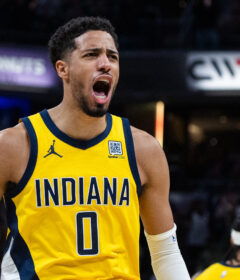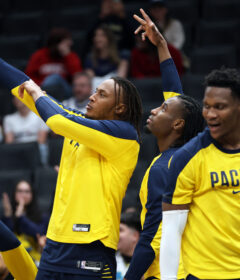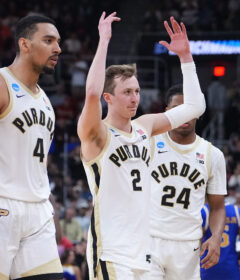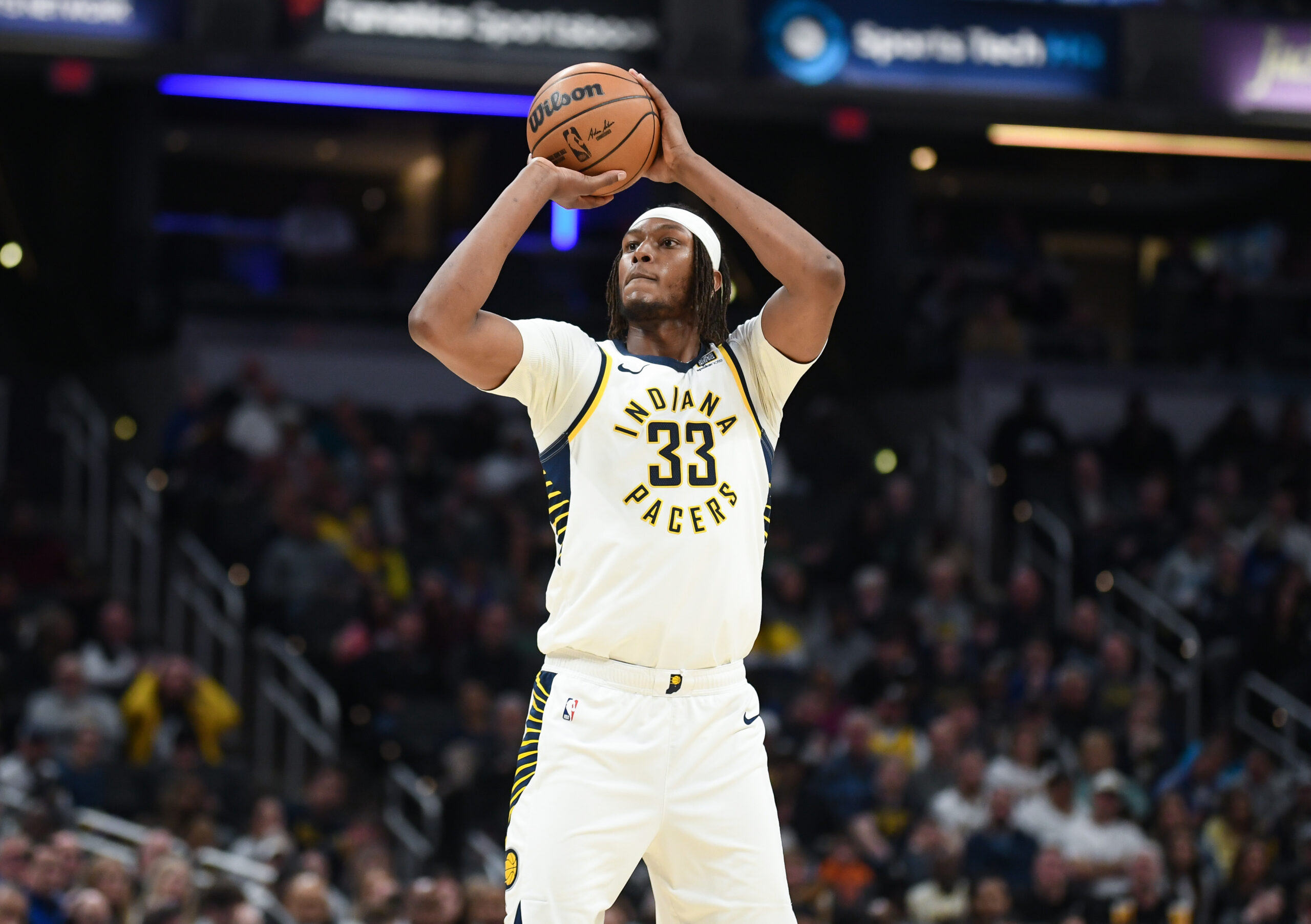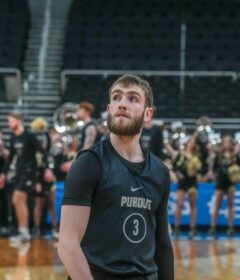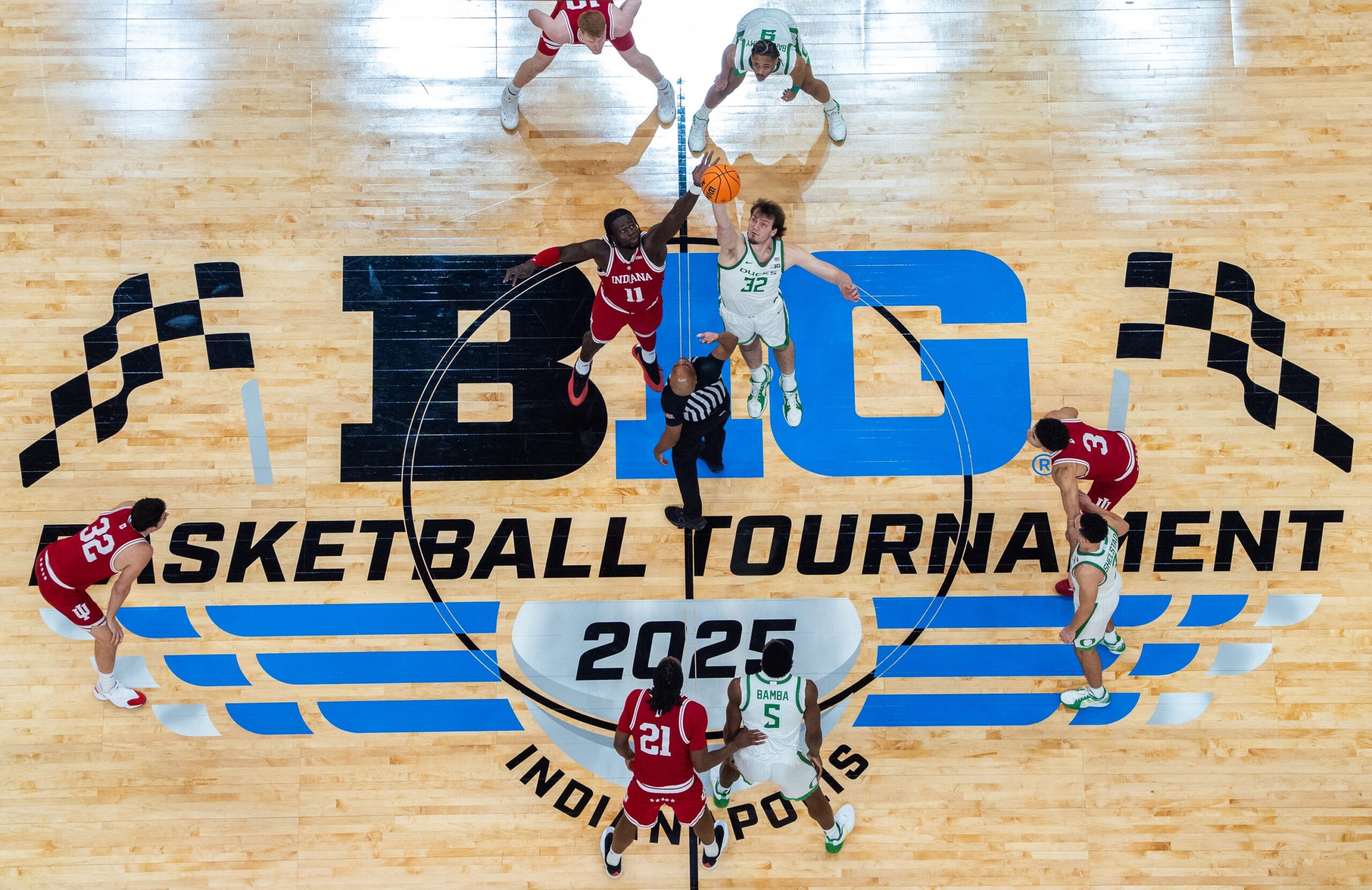Calinger: “Save the Fullback!” campaign underway
By J.W. CALINGER
ISL Correspondent
OMAHA, Neb. — The college and pro football seasons are about to begin, and with it, so is my annual Save The Fullback campaign.
The fullback has become an endangered species in football, a casualty of the trend towards playing as much as possible like kids in a backyard, throwing the ball as much as possible but mixing in the occasional running play in order to discourage the opposing defense from dropping all 11 of its members back into coverage. This trend has happened some in the pros, with the New England Patriots and Philadelphia Eagles being some of the worst offenders, but it’s especially bad in college, where the likes of Kansas and Missouri love their shotgun-empty backfield formations.
Now, there are some good reasons for the spread offense, to be sure. When Oklahoma installed it in the late 90s, no one was very good at defending it, so the Sooners won – and so did their first imitators. Hawaii and Missouri became famous for their empty backfields, the former even throwing their way to undefeated regular seasons, missing a shot at the national championship only because the BCS didn’t want to admit that a team outside their conferences might actually beat the mighty SEC or Big Ten.
The spread offense, like the West Coast and run-and-shoot before, takes advantage of the fact that as time goes by, it’s more and more illegal to play defense. Before the mid-70s, anyone trying to line up in the shotgun basically would have seen their receivers chucked and manhandled, and their quarterback sacked. However, now that the act of a corner subtly brushing the opposing wide-out is an automatic pass-interference penalty, the advantage goes to those who throw a lot.
I even understand why some of those rules are in effect. Catches are theatrical in nature, and they cater to those who like to see 40 yards gained at once, rather than those who like to see a patient and extended drive. As much as I hate watching backyard football, I understand why the NFL and NCAA want to fill seats. And yes, there is a safety issue, although limiting contact in practices and banning hard shoulder padding (it encourages players to use their bodies as battering rams) would go a lot farther toward reducing concussions than banning chucking 10 yards downfield.
That said, I love my running offenses, and I love watching my fullbacks. I even use fullbacks as a measuring stick for people who say they’re fans of any given team. If I hear a person ramble to me about his team, I love to ask, Who’s your fullback? I mean, everyone knows who the quarterback, the halfback, or the middle linebacker is, but it takes a real fan to know who your fullback is. It’s amazing how often people don’t know. For the record, the Steelers’ fullback is David Johnson.
My fascination with the fullback started when I was a child who was awful at throwing or catching but who, doggone it, could take a handoff and run with the ball. I further developed contempt for passing offenses when, in the schoolyard, the quarterback would send me out into the flat, where I’d be wide open, but the QB still would throw the ball into what would become a crowd of three players from each team.
To this day, by the way, I still criticize my pro quarterback, Ben Roethlisberger, for being too vain to check down and let Rashard Mendenhall get a sure eight yards on 1st-and-10, but that’s a different column.
Watching Nebraska football, on the other hand, was a treat. Here was a team that handed off the ball all the time, and won. In many ways, there was no bigger treat than watching Tom Osborne’s I-formation against Barry Switzer’s wishbone in the 1980s. I started college about the time that Tommie Frazier joined Calvin Jones at Nebraska and built an offense that took the premier passing team of their time, Steve Spurrier’s Florida Gators, and humiliated them (obviously, the defense had something to do with that as well, but the offense did score a lot of points in that game).
When I started watching professional football, I tried cheering for a couple of teams before settling down as a Pittsburgh Steelers fan. I started watching Pittsburgh just as Barry Foster was ending his career and, after a year with Bam Morris as our starting halfback, the beginning of the great career of Jerome Bettis.
What does this have to do with fullbacks? All the teams I’ve just mentioned had outstanding blocking backs in the middle of the I. In many ways, there was no greater poetic justice than seeing Cory Schlesinger score not only the tying touchdown (thanks to a two-point conversion), but the winning touchdown against Miami on our way to our first national championship of the 1990s. Tim Lester and Jon Witman helped spring Bettis for mad yards in the late ’90s for the Steelers, with Dan Kreider doing the same up to Bettis’ swan song in Super Bowl XL.
The Steelers weren’t the only pro team whose fullbacks I respected. I used to love watching the Tampa Bay Buccaneers 10 years ago, when former Purdue star Mike Alstott was a legitimate threat to take the ball and run with it. Just when the opposing defenses were bracing themselves for another Warrick Dunn scamper, along came the A-train up the middle.
Seattle Seahawks coach Mike Holmgren, the last NFL coach to use a split-back and broken-T formation on a regular basis, had an offense that was a fine throwback to the 1970s or 80s, when either Shaun Alexander or Mack Strong (possibly the greatest name for a fullback, ever) was likely to gain yards on any given play. Shoot, I would have cheered for the Seahawks in Super Bowl XL if they had played any AFC team except us.
These, however, were the exceptions to the rule, and in college, the fullback position was even more rare. Nebraska went from over-using the fullback under Head Coach Frank Solich (Eric Crouch’s favorite play was to line up in a stack-I, with two fullbacks and a halfback, then run a QB draw), to not using it nearly enough under his successor, Bill Callahan (a vanity hire, I say, by then-Athletic Director Steve Pedersen). One by one, the teams of the Big 12, the Big Ten, and the SEC went to what I call the chuck-and-duck offense.
These days, the pendulum is starting to swing the other way. Interestingly enough, the fullback, as defined in football 100 years ago, has been creeping back in the funniest places. In the single-wing formation, the player who lined up farthest back was the fullback, meaning that the player who takes the snap in the Wildcat formation (a modified single-wing) or the Urban Meyer offense (ditto) would be a fullback in 1912. Shoot, Knute Rockne would look at Tim Tebow and say Tebow was the best dadgum college fullback since George Gipp, possibly in those words.
Of course, the fullback as understood in the last 30 years also is on his way back in. As Gregg Easterbrook noted in the middle of the last decade, the spread offense is so prevalent that defenses have become lighter and quicker in order to speed rush. An offense that knows how to power-run, can overwhelm those lighter players across the line. This explains why Pitt has had moderate success despite the obvious handicap of having Dave Wannstedt as head coach (Steve Pedersen, now Athletic Director at the University of Pittsburgh, sure knows how to hire ˜em, doesn’t he?), and why Wisconsin would have won a national championship last year if their defense didn’t choke against Michigan State.
So, maybe teams have paid attention to the Save The Fullback movement, even if they haven’t been listening to me personally. That said, the fullback remains under-utilized. Of all the head coaches I’ve heard in the last decade, only Howard Schnellenberger, then at Florida Atlantic, discussed how critical the fullback was, which made me forget his former status as Nebraska’s arch-enemy and made me a temporary FAU fan.
As Alstott and Strong have demonstrated, a fullback can take some of the load off a halfback’s shoulders, not only by blocking for the HB, but by being a legitimate threat to carry the ball. A good fullback is just as versatile as a good halfback, in that one can carry the ball, block on a run or on a pass, or run short patterns. In fact, a good fullback can allow a coach to have a lighter running back and still have a power-running threat.
Somehow, offensive co-ordinators understand the benefit of having multiple wide receivers, any of whom can receive the ball, but forget that there is a similar benefit when two running back are in the backfield, and either of them can carry the ball. I used to think that major-college or professional coaches were too smart and experienced to be so impatient or theatrical, but I know better these days.
Some teams like to compromise by teaching a halfback how to block (such as the Steelers lining up Mendenhall and Isaac Redman in the I), teaching a third tight end to play fullback (such as what the Steelers did with David Johnson), or putting an offensive lineman in at fullback on goal-line formations. This, however, defeats the purpose of having another player who might receive the handoff. It also means that if a halfback goes into motion, there’s an almost zero-percent chance the play will be a running play, in contract to when Dunn went into motion with the Buccaneers, and the opposing D know Alstott still might chug up the middle.
Having a fullback share the rushing stats might take away from a potential rushing leader, but it can contribute to the team yards (although it took little or nothing away form Franco Harris and Ickey Woods, both fullbacks). Not only that, but more of a team rushing attack is good for team insurance.
In a passing-centered team, especially one that leaves the quarterback in the game too long in order to inflate Heisman stats, the loss of a quarterback is a disaster, such as when Texas lost a national-championship game because Colt McCoy went down in the 2nd quarter, his backup didn’t have enough experience to throw, and the running game wasn’t good enough to account for the loss of a quarterback. The Indianapolis Colts had a disaster of a season last year because the scheme was so thoroughly centered around then-QB Peyton Manning that they had to change the entire scheme when Manning was injured. Methinks a more balanced playbook would have made his injury tough, but not lethal.
So, even though times have changed, there still is a place for the fullback, and I will continue to campaign for his greater prevalence. Between the resurgence of other positions like the tight end and the 3-4 linebacker and the resurrection of older formations like the Wildcat, I’m confident that my favorite offensive position won’t go the way of the Dodo.

